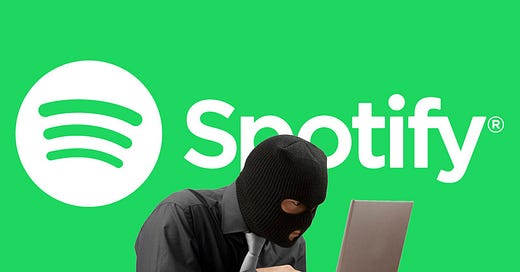The Spotify Slang Dictionary - The 2020 Edition
A few obscure ways to game DSPs' for generating more streams
With the apparently unstoppable grow in terms of registered users for music streaming services like Spotify or Apple Music, the way we listen to music (or, better said, we consume it as it became more like a comodity than a form of art) has changed irreversibly. No need to stack piles of CDs in IKEA cabinets, no need to store Gigabytes worth of songs on lazy hard drives. For the monthly price of two single origin capuccinos you gain access to all the music you can possibly imagine. And more: the auto-learning algorithms get smarter on recommending new music, so you don’t have to dig all over the interwebs for discovering new music.

As Spotify grows bigger and bigger, so does the hunt after the (lousy paid) number of streams gathered by artists. And this neverending hunt spawned all sorts of shady tricks and methods of gaming Spotify, to sometimes artificially increase the number of streams, followers. A new line of business has consequently developed: from buying fake plays and followers to pay “a small fee” that would add the song to tens of thousands of playlists. Or to just follow some simple rules to produce piles of tracks that would fit the average users’ listening habits.
For all these mechanisms, some new words and terms were coined and began to be used extensively, so we thought of giving a hand in this matter and explain a few of them as a starting point.
Gating - not to be confused it with goating, the art of walking the goat to the greenest meadows. Gating is the method of offering freebies in exchange of Spotify follows, email addresses or Youtube plays. Not as shady as other methods of gaining followers and likes, but still: free if you give something in return :D Portals like show.co offer tools for gating. If used with good intentions in mind, it may return some positive results.

Juicing - again, not to be confused with the unhuman liquids based diets. “Juicing” is the widely accepted term for boosting the number of plays / streams on various streaming platforms, from Soundcloud to Spotify. There are quite a few variations for this method, yet the most notable ones are bot juicing (using third party services that involve using sofware apps to create fake plays on certain tracks) and fan juicing, when fans are asked to let their devices play some songs on a low volume, on repeat, during the night. Who will do that, you’re asking… Well, Nicki Minaj tried fan juicing three years ago

Dry Streams. Your music is good. You don’t need to juice up the play counts. Maybe a bit of gating, but enough to build a decent list of subscribers for your sporadical newsletters. Yet, one thing doesn’t give you peace: you entered one of Spotify’s mood playlists and this generates alone a confortable number of streams, but with the cost of no one knowing your artist name. No new followers. Just a few creations of yours running lazy as background music for a bored student. And the worst is yet to come: these are usually playlists curated by a human, who would eventually change the tracks after some time. And here you have two options: keep an eye on your track stats using a platform like Soundfeed and prepare the next release just in time to enter the fresh track rotation. Or build a reputation based on these ephemere success stories, to gain a loyal army of followers.
Spotifycore / Streambait pop Did you know that there is a musical recipe proven to generate lots of streams within the Spotify environment? It went so well, it even generated a new pop subgenre, called streambait pop or Spotify-core. To pinpoint this subgenre a bit more, think of songs that would fit playlists named Chill Hits or Sad Songs. Downbeat lines, emo lyrics, taking on the increasingly isolated culture we live in. The pitched down electronic beats are perfect for long headphones sessions and maybe that’s why artists like Charlotte Lawrence, Sasha Sloan or Nina Nesbitt have successfully generated tens of millions of streams without a strong awareness to support them.
So there you have it: a handful of methods to avoid (or not!) in your quest to become a famous musician. Or at least a musician with some revenue from the digital streaming services. In the end, it all comes down to producing good music, test various methods of promoting it while using platforms like Sounfeed to check statistics, as an easy way to see what worked and what didn’t work as expected.
If you know any other nouveau terms that fit our list, feel free to add them in the comments below.



